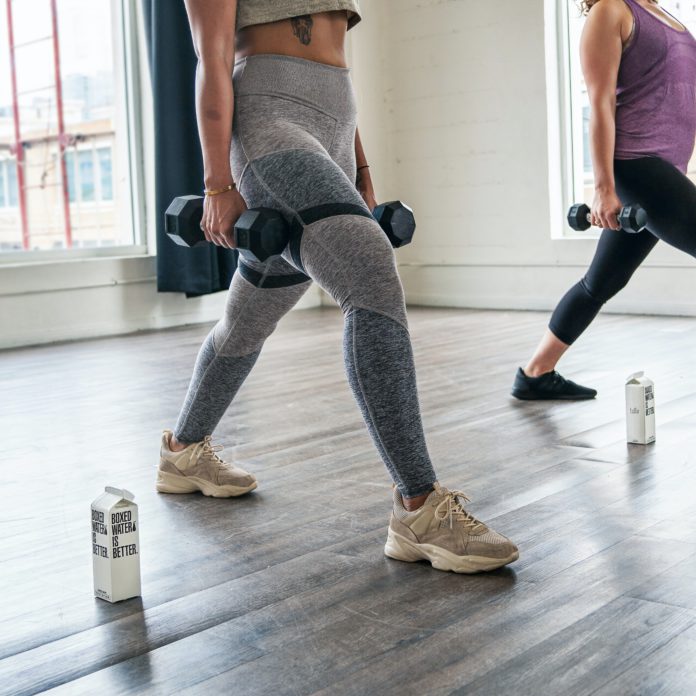
Regular exercise is a crucial factor in preventing chronic diseases such as diabetes, heart diseases, cancer, dementia, asthma, back or joint pain, anxiety, and depression. It also promotes your overall health.
Experts claim that doing regular exercise can help prevent chronic diseases, but exercise can help you anyway in managing them if you are already experiencing any chronic illness.
How regular exercise is a crucial factor in preventing chronic disease?
Regular exercise helps to manage chronic symptoms and improve overall health.
How to make exercise a daily habit?

Exercising regularly is more likely to change in a habit.
We are what we do regularly. Habits, no matter good or bad, are hard to form and break. Develop your habit by taking baby steps. In this way, you won’t back off. Doing intense workouts from the start will result in frustration, and you might give up the whole idea of doing exercise.
You can give yourself a 30-day challenge, and by the end of this challenge, exercise will become your habit.
You can take these steps to make exercise your daily habit:
- Set a time:
Set a specific time for doing exercise. It’s entirely your own choice. You can keep it in the morning, lunchtime, evening, or at any time. After setting a time, stick to it. If you don’t set a time, chances are you will ultimately put off the idea of doing exercise, and it will no longer be your habit.
- Remind yourself:
Set a reminder on your phone and when you get the reminder, do it right away. Don’t procrastinate or delay.
- Start with taking small steps
Instead of jumping right into it, take baby steps. You can start with going for a walk for 10 minutes each day or doing some light stretches.
- Get your body used to of it
Once your body gets used to daily exercise, you can slowly increase your activity’s amount and intensity.
Wait at least two weeks; this is the minimum time your body needs to adjust. Once you start feeling it leisurely, you can start increasing the length of your exercise.
- Make it pleasurable
If we associate some habit with pain, we run from it. Try feeling exercise as a pleasant thing. You can turn on some music. Music will surely make exercise more enjoyable. When doing a walk, feel the fresh air on your face, turn on your mp3 player, and enjoy the scenery, the sunset, chirping of birds, and solitude.
- Ready your workout clothes the night before:
The fewer obstacles will be, the more it will be easy for you to develop a habit. Layout your workout clothes, shoes, watch, mp3 player, or whatever you need for your exercise the night before you go out for a workout. In this way, the next morning, you will be ready to go for training.
- Getting out of the door
Getting out of the door will be the most challenging task for you if you are lazy, just like me but believe me, once you will head out the door, everything will become just a piece of cake.
- Add some flavors to your exercise
Doing the same exercises repeatedly can break your muscles, so give some rest to your strengths and keep trying on different activities instead of sticking with the same ones.
- Have a rest day
Having a rest day is very important to give some relaxation to your muscles. If you are doing just 20 mint workout, then it’s completely ok, and you don’t have to take a rest day, but if you are doing some intense workouts, your muscles surely need some rest. You don’t have to skip the day entirely. To keep your habit formed, do some light exercises like walking for 20 minutes or doing meditation. The key here is to stay active; otherwise, you will break your exercise habit.
- Don’t skip a day
Consistency is the key.
Habit formation is a skill that needs practice, so; you cannot do exercise for five days and then take a break of whole one day. If you do this, your habit will break.
Benefits of regular exercises for chronic disease patients
- Regular exercise helps people with diabetes by lowering their blood sugar level.
- It strengthens muscles and releases pain and stiffness in the joints and back
- Regular Exercise improves heart health and decreases the risk of dying from heart disease.
- It reduces asthma attacks.
- It improves the overall health of cancer patients and reduces the risk of dying from cancer.
What types of regular exercises are safe for chronic disease?
These exercises are safe for chronic patients:
Aerobic exercise:
Aerobic exercises are physical activities such as Biking, dancing, walking, yard working, etc.
Benefits:
- It gets your heart beat faster and improves your heart health.
- Helps in weight loss.
Muscle strengthening:
It involves all of your body’s major muscles, including legs, arms, shoulders, and abs. Back, chest, and hips.
Examples: Crunches, free and weights
Stretching:
Stretching using elastic bands is a sure way to keep you active and disease-free.
Do I need to take further steps before starting?
It would be best if you talked to your doctor first. He might suggest you some exercises or a diet to prevent chronic disease. You can also do some light stretches and activities on your own.
If you have diabetes, eat something light before exercising because exercise will lower your sugar level and you might get sick.
>>> You can be interested in reading about blood pressure during Exercise>>>
How often should I exercise?
Children age 3-5
- Physically active throughout the day with dynamic plays
Kids age 6-17 years
- Sixty minutes (1 hour) of physical activity every day.
Adults
- Walk at least 30 mints every day for five days per week.
- 150 mints of aerobic activities every week
- Muscle-strengthening activity at least two days per week
What type of discomfort can I expect?
You can expect a dull pain in your muscles when you start an exercise routine, but it will go away as you will become consistent in it.
“If it becomes actual pain like burning, stabbing or sharp then that’s not a good sign and you should stop.”
Dr. Johnson says, “If you experience joint pain or chest pain then that’s an indication that you must stop exercising immediately.”
Tips to stay active
- Make it a social event:get the support of your friends and family by asking them to join you. In this way, exercise will become a more enjoyable activity
- Start slowly: start slowly, and then add time-frequency and intensity.
- Plan: make exercise part of your daily or a weekly schedule.
- Walk instead of drive: when you go to a nearby place, walk instead of drive.
- Park your car far away: park your car far away so you can get a chance to do some walk.
- Stand up at work: It would be best if you stand at work instead of sitting if it’s a standing job. If not, then try standing for five mints as a break.
- Get a pet: Pets needs activity. Getting a pet, especially a dog can increase your chances of getting up and staying active. It can even encourage you to get a short walk, which will burn your calories.
- Clean your house: Cleaning your home every day ensures that you stay active. Going up and downstairs and vacuuming improves your physical health.
- Cook your meal: Cooking is an exercise rather than just preparing meals. Cooking at home reduces the chances of taking more calories. Preparing a meal plan and doing shopping beforehand can reduce the events of the feeling temptation of ordering food. If you cook a meal at home, you can keep track of what’s going in your mouth.
- Exercise during watching television: Who says you have to sit idle while watching TV? You can do simple push ups, light stretches, and even jumping jacks during commercial breaks to stay active.
Final Note:
Regular exercise is a crucial factor in preventing chronic disease. Whether you have this disease or not, make exercise your daily habit to prevent this disease completely.





